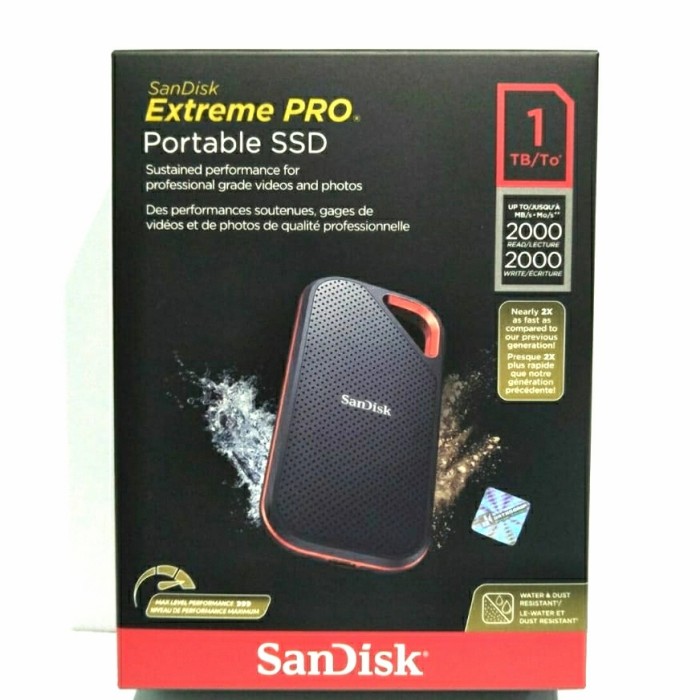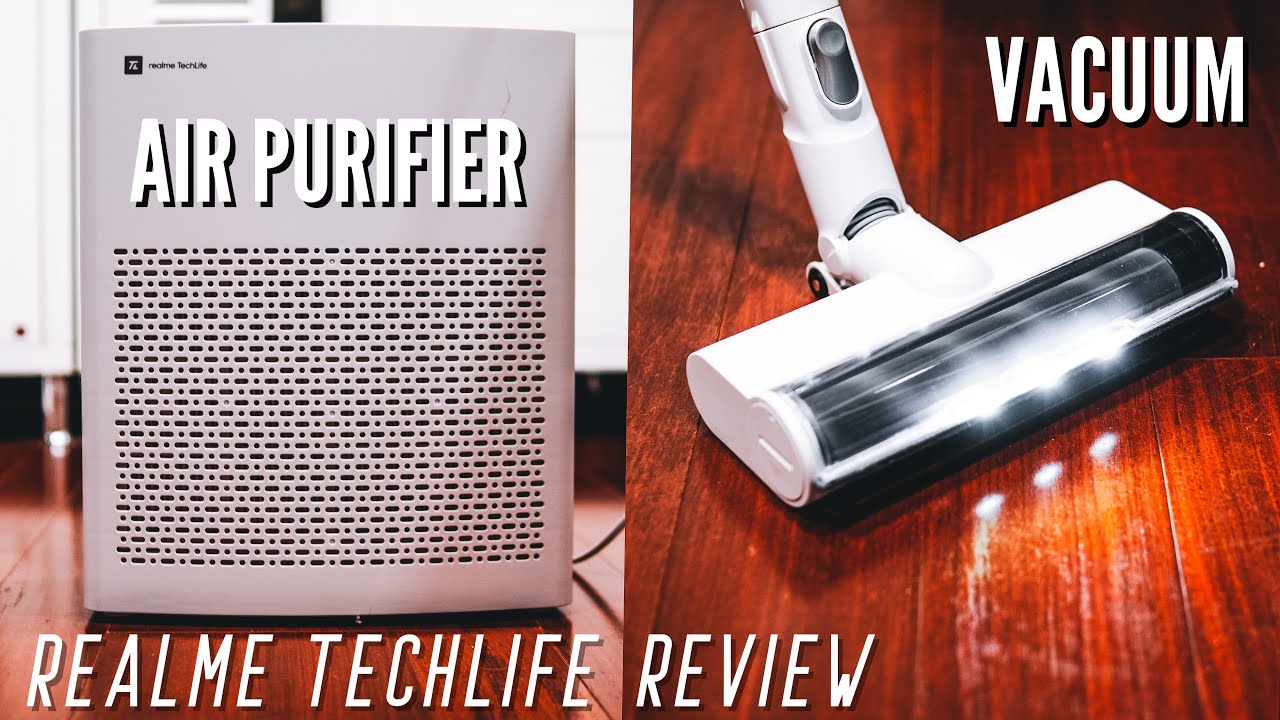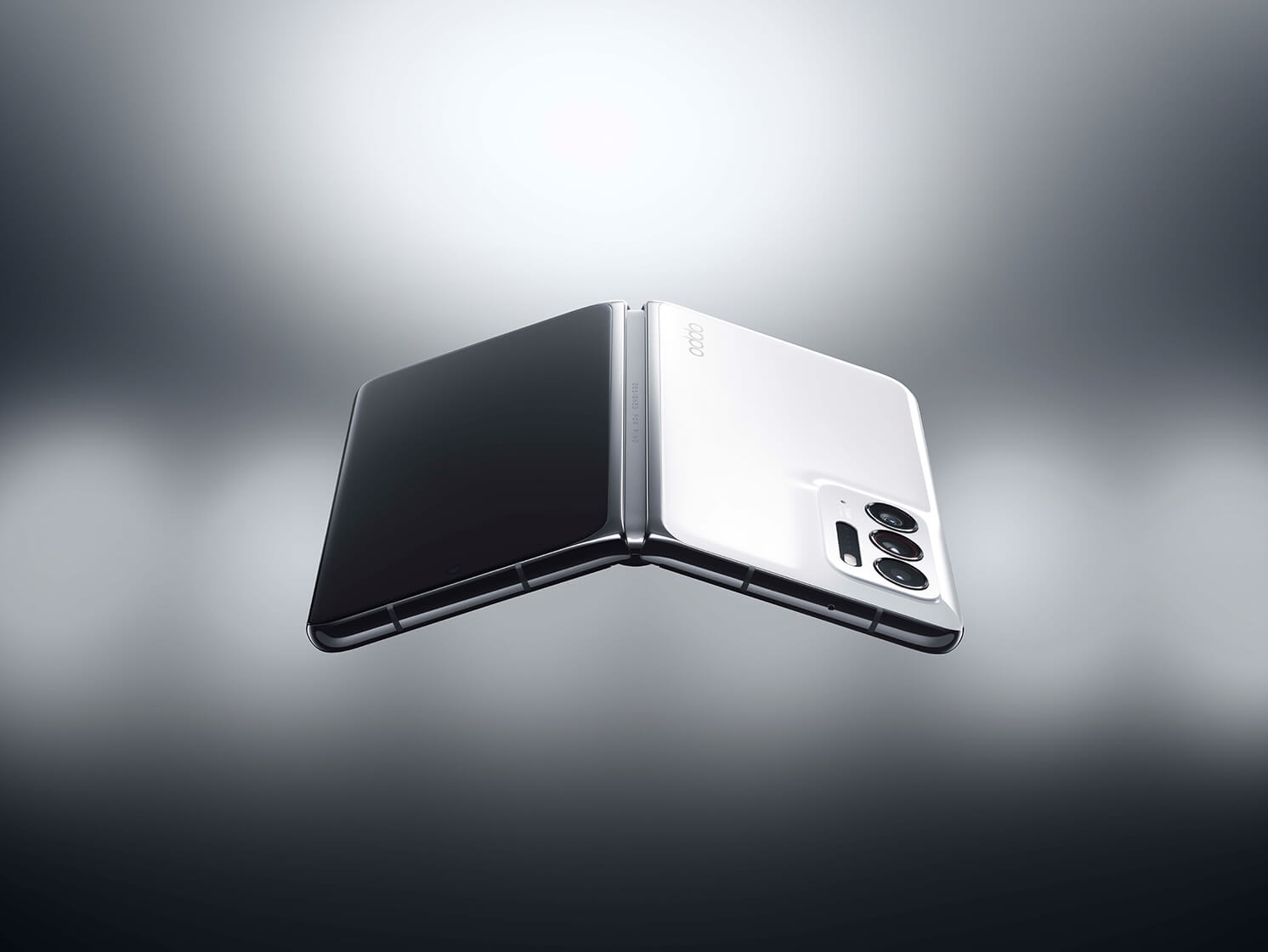
hey everybody it’s lon seidman and we’re taking a look today at not one but two solid state drives from sandisk this is their extreme pro portable ssd and this one is the regular extreme portable ssd and if these look familiar it’s because they’re a new revision of something that they’ve been selling for quite some time and this is the one i’ve been using here to edit video on the channel for quite a while now and they work quite well and these are now much faster than the old version and we’ll take a look and see exactly how fast they are in just a second but i do want to let you know in the interest of full disclosure these came in free of charge from sandisk however all the opinions you’re about to hear are my own no one is paying for this review nor has anyone reviewed or approved what you’re about to see before it was uploaded so let’s get into it now and see what these drives are all about now the price point on these will vary based on capacity and which version you choose the pro edition is a little more expensive than the non-pro edition of course and i’ll get into some of the differences between the two in a minute so the two terabyte one that we have here sells for just under four hundred dollars at the time i’m recording this video and this one here will start at 500 gigabytes this is the non-pro version and i think the sweet spot is the terabyte version that sells for about two hundred dollars now you might be wondering why buy a solid state drive like one of these when you can get a spinning drive like this for a lot less money with the same capacity often you can buy like four of these for what maybe one of those would cost and the reason is is that these deliver a ton of performance and a lot more durability there’s no moving parts on these solid state drives so you can drop them both of these are ip55 rated so while they’re not waterproof they can get water splashed on them they will keep the dust out and if you drop them they’ll likely still work afterward
both of these are rated to be dropped at a height of two meters but i’ve had one of these older ones for quite some time and i can tell you this thing has taken quite a few flights and survived often higher than two meters so you will get again better durability and much better performance and we’ll talk about the performance differences that we’ll see out of these in a few minutes now what they’ve added for this year’s version of the drives is nvme technology for the solid state disk and that will deliver better performance than the prior edition although the pro here has a way to get a little bit more of that performance out provided your hardware is configured properly the pro version here also has a metal frame to it that metal works as a heat sink but it also adds more durability to the mix as well and although i did not see these drives thermal throttling due to heat i would imagine that if you were in a hotter environment this might be able to dissipate heat a little bit better than the non-pro version now one of the design elements of these sandisk drives has always been the little carabiner clip on these so you can kind of strap them onto a backpack or something for travel and these of course continue that design language there isn’t much else though to look at here beyond the ports these of course are usb type-c devices and you’ll plug them into your computer or tablet or mobile phone with the port there on the bottom they do give you a cable in the box that will work with usb type-c connections but also larger usb a connectors so you should have everything you need in the box to be able to use these to their fullest potential now speaking of full potential you have to make sure that your
computer has the right ports in order to make the full potential that the pro drive here can deliver and the reason is is that the pro drive supports a new variant of usb called usb 2×2 and to best explain this i have to show you a chart of all of the different usb types that are out there that you might have on your computer and in order for the pro drive to work at its fullest potential your computer needs to have what you see highlighted here a super speed usb 20 gigabit per second port you might have this nice little logo here next to the port to indicate that it’s one of those usb 3.2 gen 2×2 ports and if you’ve got that then the pro drive will deliver its full potential which can go up to about two gigabytes per second i’ll show you the benchmark that i got in a second but what about computers equipped with thunderbolt ports well we tried a couple of them i’ve got my gaming laptop here that we were using during a live stream it has a thunderbolt 3 connector right there on the side we attached the pro drive to it the drive worked fine but we were not getting the faster 2×2 connection out of that thunderbolt 3 port i also tried it on my mac which has four thunderbolt 3 ports and again the drive was working fine at 10 gigabits per second but we did not get the faster connection that the drive supports now there’s a new thunderbolt standard coming up called thunderbolt 4 and if your computer has thunderbolt 4 it might work with that but the minimum requirement that intel is putting into this new specification is only 10 gigabits per second so the manufacturer has to choose to support that faster speed on the thunderbolt 4 port it is not required so on thunderbolt it is going to be hit or miss on this one just like it will be with many usb connectors out there but as you’ll see in a few minutes in some cases if you don’t have those ports the performance between the pro and the non-pro
is really close let’s take a look now at some benchmarks to see how this works in reality so we’re going to start off with a benchmark i ran on my gaming pc a little bit earlier with the pro drive and we had to run this on my gaming pc upstairs because i had to buy an expansion card to get the usb 2×2 speeds on that machine and as you can see here we’re getting about 1.46 gigabytes per second on rights and about the same on reads with the pro drive with that 2×2 card on that gaming machine up there and that’s really good performance for a usb drive and that’s because we have 20 gigabits of bandwidth to work with on that usb cable that’s not often the case on computers that don’t have the two by two connection there so that was a very good result i think for a benchmark now sandisk says that this drive can go up to about two gigabytes per second and it could just be that the card that i picked couldn’t get much faster than what we’re seeing here so i think it’s probably got a little bit more potential than i was able to get out of it but the good news is that it is making use of that 2×2 connection but where things get interesting is when you plug this drive into a regular usbc gen2 port the 10 gigabit port and as you can see it doesn’t do as well of course you’re just under a gigabyte of performance per second in both directions according to the crystal disk mark test that we ran on that drive a little while ago so now we’re going to take a look and see how the regular drive performs on one of these gigabit per second ports i’ve got it plugged into my macbook pro here and we’re going to run that blackmagic disk speed test we were running before and as you can see this drive although it’s not quite at the 980 megabytes per second the pro drive was getting
it’s pretty close as you can see easily surpassing 900 megabytes per second in both directions and this is again not the pro just the regular drive it performs quite well on that same port and makes use of the bandwidth that it has available there so the short answer here is that if you don’t have a 20 gigabit per second port on your computer either a 2 by 2 port or a usb 4 port you’re not going to get as much value out of the pro as you would if you did have one of those ports and if you are in the market for something like this i think the regular extreme drive here is going to be the one to look at given that there isn’t much of a performance difference when you’re not using a two by two port all right i’ve got one more set of benchmarks to throw at you here the crystal disk mark test and we tested first the pro drive both when it was connected to one of those gen two by two ports and then also on a 10 gigabit per second gen 2 port and we talked about the sequential reads and writes already the colored columns here are all of the random reads and write tests that the crystal disk mark test runs and by and large these are good results for random reads and rights on a portable solid-state drive and why random reads and rights are important is because if you’re playing games or loading up loading up an operating system you will have a lot of data written and read randomly to and from the drive as opposed to just having a big blob of data written in sequence so it’s important to look at the full package here and this drive is competitive with its peers in the market i’ll show you the samsung t7 in a second we also tested of course the pro in both port configurations against the non-pro version here and as you can see the non-pro again is competitive not only on its sequential reads and writes when it’s in a 10 gigabit per second port
but also on the random reads and writes we did though see a bit of a difference here on the middle test but everything else was again pretty competitive with the pro drive when it was plugged into the same port and we also took a look at the prior generation extreme drive this is the non-pro one that’s highlighted and as you can see the new drives are much much faster on sequential reads and writes and the random reads and writes are also a little bit better on the new drives too so all in the nvme is delivering better performance even with the usb connector being the bottleneck there we also compared it to the samsung t7 that we reviewed a few weeks ago and it’s performing pretty close to its competitor there in the marketplace now both the samsung and the sandisk drives here support hardware encryption and decryption and that allows you to encrypt the contents of the drive and then have the drive be inaccessible to anyone that might stumble across it who doesn’t have the password that you set for example both of these will not have a performance hit when that encryption is activated we tested that on the sam sandisk and the samsung but what i like about the samsung t7 with its touch sensor is that you have a little bit more compatibility because when you have things configured on the samsung you don’t actually need software to decrypt the drive to use it and that makes it a lot more compatible than the sandisks are at the moment so right now you could basically encrypt the samsung drive get the fingerprint set up and plug it right into an ipad and be able to use the drive with its hardware encryption you can’t do that on the sandisk now because you have to have software installed to decrypt the drive first so while you can
use hardware encryption on pcs and macs you can’t use it on an ipad at the moment and i don’t believe android is supported at the moment either but i believe they plan to have it working with it in the near future so i think if you are looking for hardware encryption uh the samsung is probably the better one at the moment just because it is largely platform agnostic because of the fingerprint sensor but in either case the hardware encryption on these is very secure and works quite well without a performance hit now it should work with most mobile devices we did plug it into a couple here around the house it did not for some reason work with my pixel 4a phone but my pixel 4 here a google android phone did work fine i was able to get the drive attached it could recognize it i could play video files off of it for example all is good and of course i could copy files back and forth this will also work with ipads with iphones on some ipads and iphones you might need an adapter to go from usb to lightning but for the most part you should be able to use these with more than just the computer including game consoles too now both of these drives come formatted with the exfat format if you plug it into your device and it doesn’t work it’s likely because your device doesn’t support exfat a reformat to a compatible file format will make everything work just fine on these and again they should work on just about any device that supports usb storage so the big question is here do you go with the pro or the regular one well if you have a 2×2 usb port or usb4 then certainly the pro is going to deliver better performance but if you don’t have one of those ports i was surprised to see that the regular extreme here really held its own against the more expensive product the build quality on the pro is better it’s got that nice metal frame to it which again can work as a heat sink so under more extreme temperature conditions the performance
consistency might be better out of the pro than the regular extreme but in my testing where we ran the drives at room temperature for a good length of time both seem to be very consistent in their overall performance and i was really disappointed that they decided not to make a thunderbolt version of the pro because i think that would have differentiated these products a little bit better and there are certainly a lot more thunderbolt equipped pcs out there these days versus a 2×2 usb equipped pc although we might see that change in the year ahead here but still i think it would have been a better differentiator to have the pro be thunderbolt and have the regular one be usb but if you do have a 2×2 connector go with the pro otherwise i think you’ll be very happy with what you see out of the regular extreme that’s going to do it for now until next time this is lon simon thanks for watching this channel is brought to you by the london tv supporters including gold level supporters tom albrecht chris allegretta mike patterson and bill pomerantz if you want to help the channel you can by contributing as little as a dollar a month head over to lawn dot tv support to learn more and don’t forget to subscribe
Read More: Xbox Series X Unboxing and Setup


